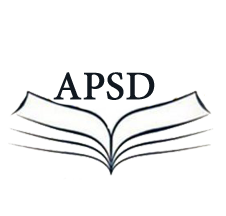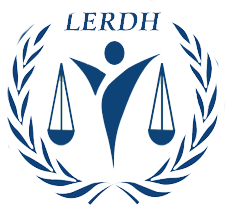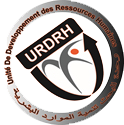 Setif-2- University is given the new name of ‘Mohamed Lamine Debaghine’ in honour of
Setif-2- University is given the new name of ‘Mohamed Lamine Debaghine’ in honour of Dr. Mohamed Lamine Debaghine (1917-2003)
Mohamed Lamine Debaghine more known as Lamine Debaghine is from Algiers city. He studied medicine in Algiers. During his youth, he attended many political events that influenced his patriotic commitment.
The celebration of the Centennial celebrations of the occupation reminded Algerians of their condition under colonization and heightened sense of humiliation. It was during this period that the nationalist awakening extends to many social strata. The educated elite were the most sensitive category to the new broadcasted speeches by different sides and that represented the national movement. In this context, the ‘North African Star’ which dared to denounce the colonial regime attracted many readers. His newspaper El Ouma is read and commented as much as the first pages of the ‘Association of Algerian Ulema: El Shihab and El Baçaïr.
Moreover, during the 1930s, Algerians mobilization spreads hand in hand with the awakening of the Popular Front and the promulgation of the Blum-Violette project which led to the holding of the Muslim Congress on June 7th, 1936 in Algiers. The meeting of August 2nd, 1936; which took place at Belcourt / Belouizdad Stadium on return of the Congress delegation dispatched to Paris; was an opportunity for Messali Hadj to lay the foundation of "an Algerian national parliament." The creation of Algerian People's Party (PPA) on March 1937, replacing the banned North African Star, began to organize meetings across the main urban centers.
Lamine Debaghine melted in that atmosphere and bare all those nationalist ideas that flourished and was seen through various events (meetings, sports clubs, Scout troops and cultural circles).
Throughout his career, it was natural that he belonged to the group of AEMNA organizers before joining the PPP on the eve of the Second World War. The prohibition of PPP and the arrest of its leaders including Hajj Messali forced the militants to experience hiding to continue to defend their claims. Taking advantage of the Anglo-American landing and the liberation of many activists, the reorganization of PPP still banned was insured by many, amongst which was Lamine Debaghine. According to the historian Mahfoud Kaddache he played a leading role, adding to his unwavering faith a strong nationalist political culture. Lamine Debaghine also made it part of the new Central Committee installed, shortly after Messali Hajj release in April 1943 (he remains under house arrest in Reibell / Ksar Chellala).
Most of his efforts were devoted to prepare for the clandestine struggle the greatest possible number, weaving a real web animated by moving frames, instructed regularly by carefully developed guidelines. Particular attention was given to youth mobilization for the party’s propaganda and to keep stirring while maintaining the party. A special effort was made in favor of schoolchildren, students and médersiens who were meant to set up branches in the cities. It also recommends the rejection of conscription and recruitment of volunteers requested by the Government of Free France.
Along with this intense underground activity, Lamine Debaghine was present at the public arena. He participated in the drafting of the Manifesto of the Algerian People with Hocine Asselah that will be given to the Allies at the French authorities, on February 12th, 1943.
It will be involved in the establishment of the Friends of Manifesto and Liberty and the infiltration of most of its sections by militants. The success of Algerian society exceeds the usual places of mobilization. The country was also deep in the game.
In January 1945, a small convention met in Algiers with Lamine Debaghine, Asselah Hocine, Mohamed Mestoul, and Chadly Mekki to make an appraisal of the situation. He concludes on the need to continue the work of structuring while thinking about the use of an armed struggle.
This ferment was at its peak all-out during the demonstrations of May 1st & 8th, 1945. Top leaders including Lamine Debaghine, Taleb Mohamed, Ahmed Mezrena, Mahmoud Abdoun, Hadj Mohamed Cherchalli believed with good faith that the time of the colonial issue was come. Together, they decided to launch the slogan of general insurrection on May 23th, 1945. They go back and abandon their project to the violent repression that befell the people of the regions of Setif and Guelma.
He came into hiding and managed to escape the police. In July 1945, Lamine Debaghine traverses the eastern regions including the Algerian Aures along with Mohamed Belouizdad. According to the testimony of Mohamed Assami (Biskra) who guided them in their visit, the two militants recommended preparing for an armed struggle.
He returned to politics in favor of the amnesty granted to prisoners and those wanted of May 1945. Later, Lamine Debaghine as a parliamentary candidate on November 1946 was on a list of the Movement for Triumph of Democratic Liberties, future name of the PPP party prohibited. Elected deputy in the second division of the department of Constantine, as well as Messaoud Boukkadoum and Djamel Derdour; Lamine Debaghine made a passionate speech on the Algerian nation (see attached text) August 20th, 1947, did not hesitate to speak about the right of the Algerian people to independence.
On another front, Lamine Debaghine is also showed radical vis-à-vis the party leadership. At the Conference of Executives (Bouzaréah, Algiers) of October 1946 and more explicitly at the Congress of February 1947, the online activists that he is one of the representatives is strongly criticized by Messali. But the Special Organization (OS) was created for this occasion. Lamine Debaghine and his supporters seem to prevail insofar as they are the majority in the Politburo including Lahouel Hocine, Ahmed Bouda ahmed Mezrena, Hocine Ait Ahmed, Mohamed Belouizdad, M'hamed Ben Mhel and Mohamed Khider.
At the end of December 1948, an expanded Central Committee of PPA-MTLD meets at Zeddine. Rigged elections in the month of April 1948 (the Algerian Assembly delegates) disappointed supporters of reformism. The report of Hocine Aït Ahmed is a plea for the necessity of preparing the armed struggle. The intention is not enough; it must be supported by a careful and developed strategy. If "the report was adopted unanimously with two voices," the party’s unity is threatened by rivalry between supporters of Lamine Debaghine and supporters of Messali. After work, Lamine Debaghine is responsible for external relations while Hocine Lahouel was appointed secretary general of the party.
The two men were struggling to find common ground.
Finally, the cultural issues raised by Kabylie activists provided an opportunity to eliminate Lamine Debaghine. In front of his opponents, he declared his resignation before the pronunciation of his exclusion from the Central Committee on November 1st, 1949.
Starting from that date, he went back to his former consultations at his cabinet in St. Arnaud / El Eulma.
On the outbreak of national liberation war eve, three of the six historic founders and leaders of the FLN: Mustapha Benboulaïd, Krim Belkacem, and Mohamed Boudiaf and got in contact with Debaghine to propose the direction he declined.
Arrested on June 24th, 1955, he was released six months later. He joined the FLN in the late 1956. Abane Ramdane entrusted the external delegation of FLN.
Thereafter, he was a member of the CNRA established at the Congress of Summam in August 1956 and the EAC in 1957.
He was appointed Minister of Foreign Affairs in the first Provisional Government led by Ferhat Abbas in September 1958. He resigned on March 15th, 1959.
In the aftermath of independence, he returned to his medical practices.
Lamine Debaghine died on January 23rd, 2003. His body rests in his hometown of Cherchell.
















